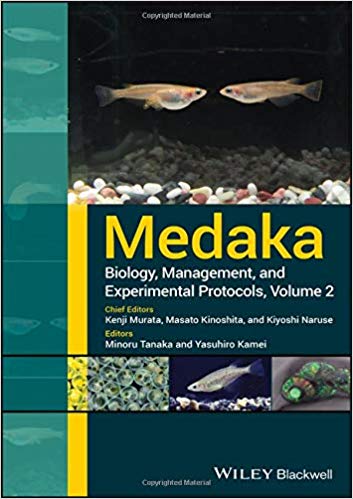
Medaka:Biology, Management, and Experimental Protocols
Medaka:生物学、管理与实验方案
农业史售 价:
¥
2045.00
发货周期:4-6周
作 者
出 版 社
出版时间
2019年09月27日
装 帧
精装
页 码
360
开 本
16.83 x 24.45 cm.
语 种
英文
综合评分
暂无评分
- 图书详情
- 目次
- 买家须知
- 书评(0)
- 权威书评(0)
图书简介
Medaka, Biology, Management, and Experimental Protocols, Volume 2 is the second in the series, with volume 1 published in 2009. The purpose of Volume 2, is to familiarize scientist worldwide with the advantages of using medaka inexperimental designs, to facilitate research using medaka, and to stimulate progress in research by adopting medaka as a model animal. In Volume 2, the authors provide additional information and current protocols that have been recently developed, or modified, to successfully raise medaka fish under stable culture conditions in the laboratory; and how to use medaka as a model animal. This volume describes new technologies developed after 2009, using the fish as a molecular tool in the fields of life science, evolution, ecology and toxicology. It provides an informational bridge that spans the varied research disciplines and abilities that range from undergraduate education through the level of senior researcher, and addresses the value to science of medakas adoption as a model animal. Written by experts and pioneers in the use of medaka as the model animal in their scientific fields. The authors describe their experimental protocols in detail and the rationale for the chosen protocols in achieving their conceptual goals. The editors recommend that users read the previous procedures of Volume 1 that describe the maintenance of medaka; and use this information to create or modify the current fish-maintenance systems to improve and advance the science andtechnology. Medaka, Biology, Management, and Experimental Protocols, Volume 2 format is designed to capture the thoughts and methods of researchers that use medaka as a model animal; and to make this expertise accessible to students, beginning researchers and senior researchers, who might become intrigued with using medaka fish as the model animal in their own works.To accomplish this, and following a reading of Volume 1, the reader is provided step-by step specifics for each protocol that allows application of the fish in their own work. The information includes specific information to facilitate ease of adoption: minute details such as reagents used in methodology, instrumentation, and other essential requirements. It is anticipated that this highly practical format will encourage the reader to use medaka as a model animal; and permit the reader to bring new concepts into personal practice in a more efficient manner.
本书暂无推荐
本书暂无推荐















